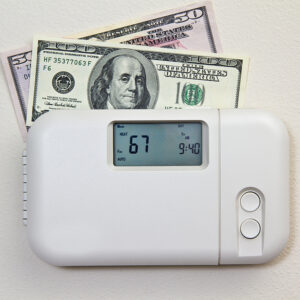It is not a surprise that the New Hampshire Home Builders Association is not interested in lowering the cost of heating and cooling your new home. After all, their money is made from the sale of the home, not the operating cost of the home or building. The cost to operate is borne by the homeowner or leaseholder long after the builder has left town.
The current debate in the New Hampshire legislature about adoption of the 2021 IECC (International Energy Conservation Code) energy codes is not unique to our state. It is a national campaign funded by the National Association of Home Builders (NAHB) and the National Gas Council, which speaks volumes about the motive.
The primary features of the 2021 IECC energy code are some additional ceiling insulation and improved air sealing. These features not only lower monthly energy bills for homeowners but also improve the health of the occupants. The home is warmer on cold nights and cooler on hot, humid days.
The cost to make these improvements, according to their own analysis, is estimated to be $6,800 on a 2,500-square-foot new home in New Hampshire. Assuming a new home of this size has a market value of $400,000, this amounts to less than 2 percent of home value and can save $30,000 to $40,000 in heating and cooling costs over the life of the building. The additional cost is more than offset by the increased value of energy-efficiency homes, which Fannie Mae estimates to be 3-5 percent. It also typically affords a lower interest rate on the mortgage in recognition of the lower heating and cooling costs for these homes, which in turn reduces the risk of default by the borrower.
The fight over the adoption of the 2021 IECC building codes currently active in the New Hampshire legislature is a proxy for the fight over the decarbonization of buildings in New Hampshire and the U.S. in general. Buildings represent 39 percent of the total carbon emissions to the atmosphere on our planet. Heating and cooling represent 43 percent of that total and hot water another 14 percent. Increasing the insulation and improving the sealing of our buildings is the quickest way for us to reduce these emissions and lower monthly energy bills at the same time. This is important in new home construction where the costs to implement these changes later are easily 10 times the incremental cost to do them during the construction phase.
An argument often used by the New Hampshire Home Builders Association is, “Our customers are not asking for energy efficiency improvements, and we should not force it upon them.” But customers do not ask about things they know little about. They didn’t ask for fire alarms, sprinkler systems, or airbags in our automobiles until they became educated about their benefits. We need to educate home buyers about the benefits of living or working in an environment with a stable temperature, humidity, and good indoor air quality.
We have known for years how to make humans comfortable in the indoor environment and it is consistent with the adoption of the proposed IECC 2021Energy Codes. It is also aligned with the goals of reducing energy consumption and related operating costs for home and building owners. Let’s please resist the pressure and lobbying by the fossil fuel industry to derail our rapid transition away from dependence on fossil fuels





